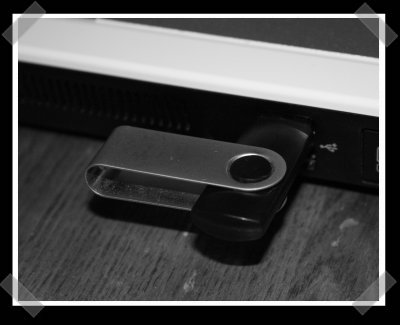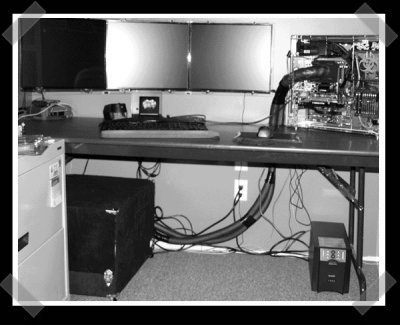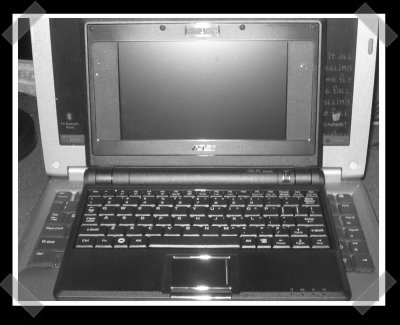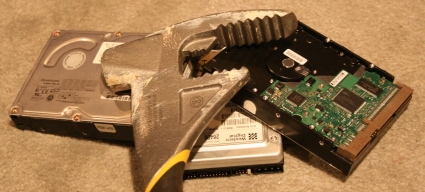
Inspired by some research done at princeton (looks like the original site is down), [Wesley] sent in his version of a bootable RAM dumping USB drive, complete with a how-to on rolling your own. He put together a utility that runs under syslinux to capture the data, installed it to a USB thumb drive and managed to create a device that will boot on a machine and copy the contents of the RAM before it’s overwritten by another utility.
computer hacks1402 Articles
computer hacks
Breaking Disk Encryption With RAM Dumps
If you haven’t gotten a chance yet, do watch the video of this attack. It’s does a good job explaining the problem. Full drive encryption stores the key in RAM while the computer is powered on. The RAM’s stored data doesn’t immediately disappear when powered off, but fades over time. To recover the keys, they powered off the computer and booted from a USB disk that created an image of the RAM. You can read more about the attack here.
How can you reduce this threat? You can turn off USB booting and then put a password on the BIOS to prevent the specific activity shown in the video. Also, you can encrypt your rarely used data in a folder on the disk. They could still decrypt the disk, but they won’t get everything. I don’t think this problem will truly be fixed unless there is a fundamental change in hardware design to erase the RAM and even then it would probably only help computers that are powered off, not suspended.
The potential for this attack has always been talked about and I’m glad to see someone pull it off. I’m hoping to see future research into dumping RAM data using a USB/ExpressCard with DMA access.
Window Unit Turned PC Water Cooler

I almost passed this one up because it was shotgunned across a few blogs, but it would be a shame to pass up on a good hack. [Mike] decided to use a standard window AC unit to cool the CPU in his rig. The A/C unit was modified to place the evaporation coil inside a fish tank filled with glycol/water antifreeze coolant. To cool the CPU, he used a normal water block, but insulated the coolant lines between the cooling unit and the machine. That should give you the idea. For more details, have fun deciphering his project in pictures. [via]
Bonus: [Johnny] sent in the NASA workmenship guide. It’s pretty interesting to see what the space boys require for their electronics work.
EeePC Inverse Video Scaling

[Tracker] sent in this handy software hack for the eeePC. The idea is to scale higher resolutions like 1024×768 down to the native 800×480 screen resolution. His post tells you how (but requires windows) and helpfully provides the required downloadable driver. I wonder if he’s seen this video showing up 1600×900?
(update: fixed the missing video link.)
Replace Your LCD Power Supply

[Computer Guru]’s LCD power supply went out, making it a useless pile of plastic. He used an old computer PSU to replace the defective one. After he identified the outputs on the built-in supply (The one’s I’ve pulled apart were labelled) he stripped down the replacement PSU to provide the necessary voltages.
24th Anniversary Macintosh

[Dave] sent in his retro Mac project. Putting new guts into an old mac isn’t really unheard of, but I liked his solution to use the original Mac 512k keyboard and mouse. He used an Atmel AT90USB162 to create his own standard USB HID device. The keyboard and mouse appear as a standard USB device, so the mac (or any modern USB PC) can identify use the keyboard and mouse without any additional software.
Holiday Hackit: Automated Hard Drive Destruction

One of our recent posts took an interesting tangent: physical hard drive destruction. First, [wolf] wanted to use a 20ga shotgun shell on his hard drive. [brk] suggests an electromagnet applied to the drive while it’s still spinning. Everyone thought thermite might be interesting… Finally, [wolf] noted this commercial auto destruction drive that floods itself with an acid mist. I’ll suggest a few ideas and let you guys take it from there.
I’d suggest pneumatic injection of two part epoxy into the drive mechanism. Remove the top of the casing using the diy clean room method, add a port for the epoxy and use a cheap CO2 bike injector to force the liquid into the drive on demand.
So, got a better idea? Let’s hear it.










